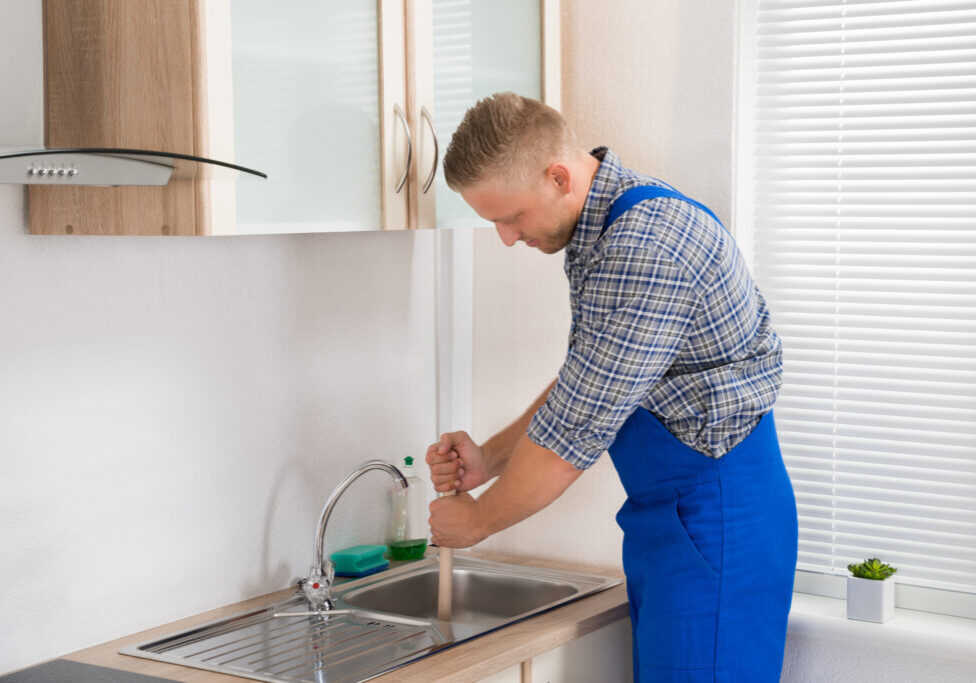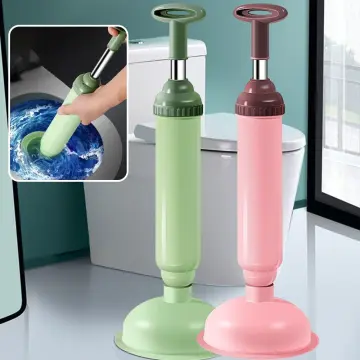Learn Plungers and Drain Cleaners: Best Practices
Learn Plungers and Drain Cleaners: Best Practices
Blog Article
Were you looking for information concerning A Guide to Plungers (and How to Use Them)?

Intro
Appropriate maintenance of home drains is vital for stopping blockages and making sure smooth water flow. One of the key devices in every home owner's toolkit is the plunger, alongside different drain cleansers made to take on stubborn obstructions successfully. This post explores how to utilize bettors and drainpipe cleaners efficiently to maintain your drains streaming freely.
Section 1: Recognizing Plungers
Kinds of Plungers
There are numerous types of bettors readily available, each developed for different sorts of drains and blocks. One of the most usual kinds include cup plungers, flange plungers, and accordion plungers.
Exactly How Plungers Job
Bettors work with the concept of developing stress and suction to displace clogs. When properly applied over a drain, they produce a vacuum that can pull out particles or separate clogs.
Picking the Right Bettor
Picking the right plunger depends on the type of drain and the nature of the clog. Mug bettors are ideal for sinks and bathtubs, while flange bettors are much better fit for bathrooms because of their design.
Common Mistakes with Bettors
Staying clear of these errors guarantees effective plunging: inappropriate seal around the drainpipe, inadequate force, and not clearing surrounding debris.
Area 2: Using Plungers Successfully
Prep work
Prior to plunging, make certain the plunger covers the drainpipe completely and develops a limited seal. Clear any kind of noticeable debris around the drainpipe opening.
Technique
Begin with mild diving activities to build suction. Increase pressure slowly, making use of a steady rhythm. Repeat as required up until the drain removes.
Fixing Tips
If plunging doesn't work, try adjusting the seal, applying oil jelly for a much better seal, or utilizing a various kind of plunger.
Area 3: Understanding Drain Cleaners
Types of Drainpipe Cleansers
Drain cleansers can be chemical or chemical. Chemical cleansers utilize strong chemicals to dissolve blockages, while chemical cleaners use all-natural enzymes to break down raw material.
Just How Drain Cleaners Job
Chemical cleansers react with clogs to liquify them, while enzymatic cleaners break down natural products like hair and oil without damaging pipes.
Safety Considerations
Constantly wear handwear covers and eye security when making use of chemical drain cleansers. Guarantee ample air flow and comply with supplier instructions meticulously.
Eco-Friendly Alternatives
Consider making use of vinegar and baking soda or enzyme-based cleansers for environmentally friendly alternatives that are safer for pipelines and the setting.
Area 4: Making Use Of Drainpipe Cleaners Successfully
Application Strategies
Pour chemical cleaners directly into the drainpipe opening. Enable them to benefit the recommended time before purging with warm water. Chemical cleaners ought to sit over night.
Precautions
Stay clear of mixing different kinds of cleaners, as this can create harmful fumes. Never utilize chemical cleaners in conjunction with a bettor, as spilling can occur.
Taking Care Of Stubborn Blockages
For persistent clogs, take into consideration making use of a pipes snake or calling an expert plumbing professional to prevent damages to pipelines.
Conclusion
To conclude, recognizing just how to use plungers and drain cleaners properly is essential for maintaining healthy pipes systems. By picking the right tools and strategies, home owners can deal with small blockages and stop major plumbing issues down the line.
How To Properly Use A Plumbing Snake To Clear Drains
When any drain clogs in our home arise, we tend to gravitate toward the plunger and little else. In cases where the plunger and its vacuum-created pressure are not able to clear clogs, many immediately move to harmful chemicals or simply call their plumber to fix the issue.
we’re happy to help with all drain cleaning needs and concerns. This includes informing you on a few other home remedies you may have at your disposal for minor to moderate clogs, one of which is the use of a plumbing snake. Many people have never used one of these before – let’s go over the steps to take when your drain clogs and you have a plumbing snake available.
Attempt Plunger Use
The first step here, as we noted above, should indeed be to grab your plunger when you notice a drain clog and attempt to resolve it this way. If you’re unsure how to use a particular type of plunger, our plumbers can answer any questions you have. If this doesn’t do the trick, however, you move on to the snake.
Locate And Prepare Snake
A plumbing snake is a metal or plastic device that’s generally about a quarter of an inch thick. It’s design with significant extensions, meant to reach down into your clogged drain and push the clog out. Snakes also contain drain augers that will latch onto and push stubborn blockages.
If your plunger doesn’t clear a clog, locate your snake and bring it to the drain in question. We also recommend keeping a bucket nearby to collect the clog once you pull it out, plus we’d advise wearing goggles and possibly protective gloves.
Feed Snake
Once you’re ready to go, feed the snake slowly down the drain, using the crank device it comes with to keep it moving until it finds the clog. Once this happens, much of the clog will be latched onto the coil so you can pull it out, while the rest will simply break up and flow downward.
Detach Debris
Remove the snake slowly from the drain, and once you’ve done so, pick off any debris that’s stuck to the coil. This is another area where wearing gloves is a must.
Flush Drain
Finally, take a few minutes to ensure the snake has done its job correctly. If you’ve been using it on a toilet, flush the toilet a couple times and make sure everything flows well. If you’ve used it on a different drain, flush it with some room temperature water.
https://www.mybuddytheplumber.com/blog/how-to-properly-use-a-plumbing-snake-to-clear-drains/

Application Strategies
Pour chemical cleaners directly into the drainpipe opening. Enable them to benefit the recommended time before purging with warm water. Chemical cleaners ought to sit over night.
Precautions
Stay clear of mixing different kinds of cleaners, as this can create harmful fumes. Never utilize chemical cleaners in conjunction with a bettor, as spilling can occur.
Taking Care Of Stubborn Blockages
For persistent clogs, take into consideration making use of a pipes snake or calling an expert plumbing professional to prevent damages to pipelines.
Conclusion
To conclude, recognizing just how to use plungers and drain cleaners properly is essential for maintaining healthy pipes systems. By picking the right tools and strategies, home owners can deal with small blockages and stop major plumbing issues down the line.
How To Properly Use A Plumbing Snake To Clear Drains
When any drain clogs in our home arise, we tend to gravitate toward the plunger and little else. In cases where the plunger and its vacuum-created pressure are not able to clear clogs, many immediately move to harmful chemicals or simply call their plumber to fix the issue.
we’re happy to help with all drain cleaning needs and concerns. This includes informing you on a few other home remedies you may have at your disposal for minor to moderate clogs, one of which is the use of a plumbing snake. Many people have never used one of these before – let’s go over the steps to take when your drain clogs and you have a plumbing snake available.
Attempt Plunger Use
The first step here, as we noted above, should indeed be to grab your plunger when you notice a drain clog and attempt to resolve it this way. If you’re unsure how to use a particular type of plunger, our plumbers can answer any questions you have. If this doesn’t do the trick, however, you move on to the snake.
Locate And Prepare Snake
A plumbing snake is a metal or plastic device that’s generally about a quarter of an inch thick. It’s design with significant extensions, meant to reach down into your clogged drain and push the clog out. Snakes also contain drain augers that will latch onto and push stubborn blockages.
If your plunger doesn’t clear a clog, locate your snake and bring it to the drain in question. We also recommend keeping a bucket nearby to collect the clog once you pull it out, plus we’d advise wearing goggles and possibly protective gloves.
Feed Snake
Once you’re ready to go, feed the snake slowly down the drain, using the crank device it comes with to keep it moving until it finds the clog. Once this happens, much of the clog will be latched onto the coil so you can pull it out, while the rest will simply break up and flow downward.
Detach Debris
Remove the snake slowly from the drain, and once you’ve done so, pick off any debris that’s stuck to the coil. This is another area where wearing gloves is a must.
Flush Drain
Finally, take a few minutes to ensure the snake has done its job correctly. If you’ve been using it on a toilet, flush the toilet a couple times and make sure everything flows well. If you’ve used it on a different drain, flush it with some room temperature water.
https://www.mybuddytheplumber.com/blog/how-to-properly-use-a-plumbing-snake-to-clear-drains/

Do you really like reading up on ? Give a remark down below. We will be pleased to see your insights about this blog. We hope that you visit us again soon. If you please take a moment to promote this article if you enjoyed it. We appreciate your readership.
Schedule Services Report this page